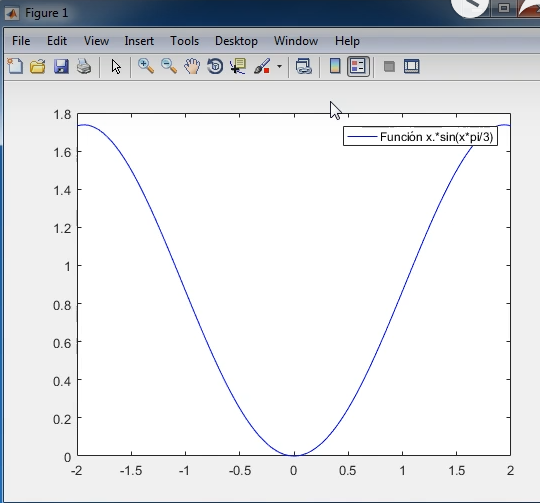
'Infinite or Not-a-Number function value encountered' indicates a floating point overflow or division by zero during the evaluation of the integrand in the interior of the interval. 'Maximum function count exceeded' indicates that the integrand has been evaluated more than 10,000 times. 'Minimum step size reached' indicates that the recursive interval subdivision has produced a subinterval whose length is on the order of roundoff error in the length of the original interval. Quadl may issue one of the following warnings: Quadl implements a high order method using an adaptive Gauss/Lobatto qudrature rule.

The function quad may be more efficient with low accuracies or nonsmooth integrands. ^ in the definition of fun so that it can be evaluated with a vector argument. Returns the number of function evaluations. Pass empty matrices for tol or trace to use the default values. to be passed directly to function fun, fun(x,p1,p2.). return the polynomial coefficients vector whose roots are given in A.

With non-zero trace shows the values of during the recursion. Larger values of tol result in fewer function evaluations and faster computation, but less accurate results. Uses an absolute error tolerance of tol instead of the default, which is 1.0e-6. fun accepts a vector x and returns a vector y, the function fun evaluated at each element of x. Numerically evaluate integral, adaptive Lobatto quadratureĪpproximates the integral of function fun from a to b, to within an error of 10 -6 using recursive adaptive Lobatto quadrature. In this case, given two parts of a vector: v(1) and v(2:end) we find the solution for v(1) and then call numbgreater on v(2:end). Recursion in general takes a problem, solves part of it, calls the same function again on the rest, and combines the two answers. Also, let $r_1$ be the mean return time to state $1$.įigure 11.13 - A state transition diagram.Quadl (MATLAB Functions) MATLAB Function Reference As I mentioned in the comments to rayryeng's answer, his solution uses tail recursion. Let $t_k$ be the expected number of steps until the chain hits state $1$ for the first time, given that $X_0=k$. Let's look at an example to see how we can find the mean return time.Ĭonsider the Markov chain shown in Figure 11.13. Using the law of total probability, we can write
#Recursion in matlab return vector how to
We have already seen how to find $t_k$'s (mean hitting times). Again, let's define $t_k$ as the expected time until the chain hits state $l$ for the first time, given that $X_0=k$.

The state transition matrix of this Markov chain is given by the following matrix.Ġ & \frac=1$).Īs before, we can apply the law of total probability to obtain $r_l$. Let's consider the Markov chain shown in Figure 11.12.įigure 11.12 - A state transition diagram.

This way, you do not need to memorize any formulas. You should try to understand the main idea here. We will then provide the general formulas. We will introduce this technique by looking at an example. In this section, we will use this technique to find absorption probabilities, mean hitting times, and mean return times. In fact, we have already used this when finding $n$-step transition probabilities. A very useful technique in the analysis of Markov chains is using law of total probability.


 0 kommentar(er)
0 kommentar(er)
